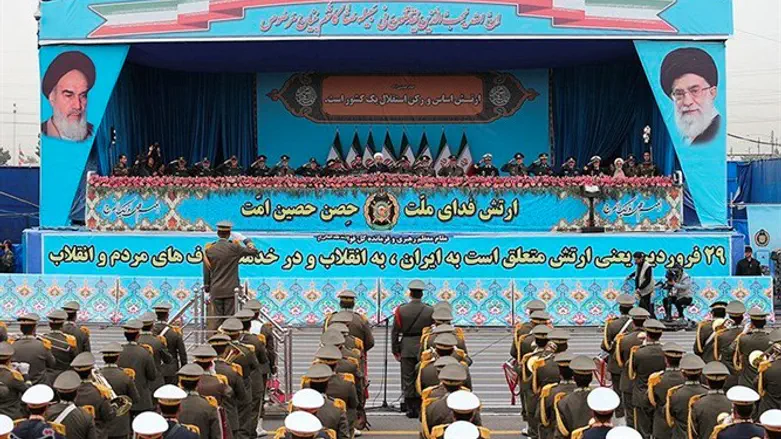
Iran on Thursday showcased its domestically made fighter jets by flying the aircraft over Tehran during a military parade marking National Army Day, The Associated Press reported.
TV footage showed the aircraft performing during the parade, including the latest all-Iranian fighter jet dubbed Kowsar, which in Islamic meaning refers to a river in paradise and is also the title of a chapter in the Quran.
The twin-seated Kowsar — modelled after American F-5 fighter jet — was inaugurated in 2018, when the TV aired images of President Hassan Rouhani briefly sitting in the plane’s cockpit inside a hangar before the ceremony.
The parade also showcased the Saegheh, or “Thunderbolt,” another domestically built fighter in Iran’s air force.
During Thursday’s event, the air force also paraded Iranian battlefield personnel carriers, machine-guns, tanks, transport vehicles and Iranian-made Talash as well as Russian-made S-300 missile systems, according to AP.
Iran often boasts of its military accomplishments, though it is not always possible to say with certainty that it is telling the truth about those accomplishment
In 2017, the Islamic Republic claimed to have unveiled a domestically manufactured tank which “has the capability to fire missiles and precisely guide them."
Previously, Iran's Revolutionary Guard claimed it had successfully tested a Hormuz 2-type ballistic missile.
Iran has also claimed it is in possession of the “father of all bombs”, described as a domestically-made 10-ton bomb with a high destructive power.
Rouhani, meanwhile, addressed Thursday’s parade and called on Middle East states to "drive back Zionism", saying Israel and its US ally were the root causes of the region's problems.
The parade comes amid heightened tensions between the US and Iran after the US designated the Islamic Revolutionary Guards (IRGC) as a foreign terrorist organization.
The US move to designate the IRGC as a terrorist organization came amid the ongoing tensions between Washington and Iran following US President Donald Trump’s withdrawal last May from the 2015 nuclear deal between Iran and world powers.
The US has since imposed two rounds of sanctions on Iran, the latest of which went into effect in early November. Those sanctions aim to reduce Iran’s oil exports to zero in a bid to curb the Islamic Republic’s missile program and regional influence.
The US terrorism designation for Iran’s Revolutionary Guard formally took effect on Monday. A day later, Iranian lawmakers overwhelmingly approved a bill labeling US forces in the Middle East as terrorists.
